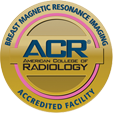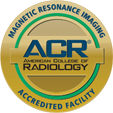What is an Arthrogram?
An Arthrogram is a diagnostic test which examines the inside of a joint (e.g. shoulder, knee, wrist, ankle) to assess an injury or a symptom you may be experiencing. The test is done by first injecting contrast medium (or “dye” as it is sometimes called) into the joint, which outlines the soft tissue structures in the joint (e.g. ligaments and cartilage). It makes them clearer to see on the images or pictures that will be taken of the joint. This is done via ultrasound guidance at The MRI Center. Ultrasound uses non-harmful sound waves to transmit moving images onto a screen to guide the placement of the needle containing the contrast medium. The exact technique will vary from doctor to doctor and also depend on the joint being injected. This is then followed by a magnetic resonance imaging (MRI). While an MRI without the use of contrast medium can provide information on the soft tissue structures, using contrast medium with MRI Arthrogram (injecting into the joint) may provide more information about what is wrong with the joint.
[/fusion_builder_column][fusion_builder_column type=”1_1″ background_position=”left top” background_color=”” border_size=”” border_color=”” border_style=”solid” spacing=”yes” background_image=”” background_repeat=”no-repeat” padding=”” margin_top=”0px” margin_bottom=”0px” class=”” id=”” animation_type=”” animation_speed=”0.3″ animation_direction=”left” hide_on_mobile=”no” center_content=”no” min_height=”none”][fusion_title size=”3″]How do I prepare for an Arthrogram?[/fusion_title]
Generally no specific preparation is required. All required paperwork can be found here and filled out before your appointment. It may be best to wear comfortable clothing with easy access to the joint being examined.
What happens during an Arthrogram?
You will be asked to lie down and the skin over the joint being examined will be cleaned with an antiseptic solution. Following this, a local anesthetic may be injected into the skin to numb the area where the contrast medium will be injected. You may feel a slight stinging sensation. Then using ultrasound, a needle will be placed into the joint and after ensuring the needle is in the right place, the contrast medium will be injected into the joint. The injection may be accompanied by a feeling of fullness in the joint but should not be painful. Following the injections, you will be taken to the MRI suite where the scan of the joint will be performed.
Are there any after effects of an Arthrogram?
Many people have a sore joint as the reason for the examination. Most patients feel some mild to moderate increase in soreness in the joint for 24-48 hours following the injection. The joint should then return to feeling the way it was before the examination.
How long does an Arthrogram take?
The Arthrogram itself usually takes about 15 minutes. You may then have to wait a short time before having the scan performed. The subsequent MRI scan may take 15-20 minutes depending on the joint and the number of scans that have to be done. You should allow approximately 1 to 1.5 hours from arrival.
What are the risks of Arthrography?
Arthrography is a very safe procedure and complications are unusual. The most serious complication is an infection of the joint. This is usually caused by organisms from the patient’s skin being transferred into the joint and for this reason the procedure should not be carried out if there is broken or infected skin overlying the joint. The risk of infection is not precisely known but the best available information suggests that it is in the order of 1 in 40,000 people having the test. Occasionally people may be allergic to the contrast medium that is injected, and this most commonly results in a rash but may be more serious. The risk of minor reaction (e.g. hives) has been reported in 1 in 2,000 having the test. More serious reactions appear to be very rare. Complications of contrast medium used in an MRI have not been reported in the very small amounts used in arthrography.
What are the benefits of an Arthrogram?
The injection of contrast medium into the joint makes the subsequent scan more sensitive in detecting damage to the internal structure of the joint. Some common reasons for an Arthrogram in addition to the scan are:
- In the shoulder – where the joint is unstable or if an ultrasound or plain MRI has not shown a suspected labral tear or cartilage tear.
- In the hip – to show any tear of the cartilage labrum (or rim of the joint).
- In the wrist – to show any tear of the small ligaments of the wrist.
There are many other individual situations where your referring doctor may feel that the additional information obtained by an Arthrogram may help to determine the best course of treatment.
Who does the Arthrogram?
A radiologist or another Cedar Lake Physician will perform the Arthrogram, injecting the contrast medium into the joint. The radiologist is also responsible for ensuring that the appropriate scans are performed following the injection and for analyzing the scans and preparing a formal report of the findings, which is sent to the doctor who referred you for the test. A radiology technologist may assist the radiologist in the Arthrogram. The radiology technologist is responsible for taking the pictures in the Arthrogram and the subsequent scan under the radiologist’s direction.
When can I expect the results of my Arthrogram?
The time that it takes your doctor to receive a written report on the test or procedure you have had will vary from 2 – 8 hours. Please feel free to ask us during your exam when your doctor is likely to have the written report. It is important that you discuss the results with the doctor who referred you, either in person or on the telephone, so that they can explain what the results mean for you.


